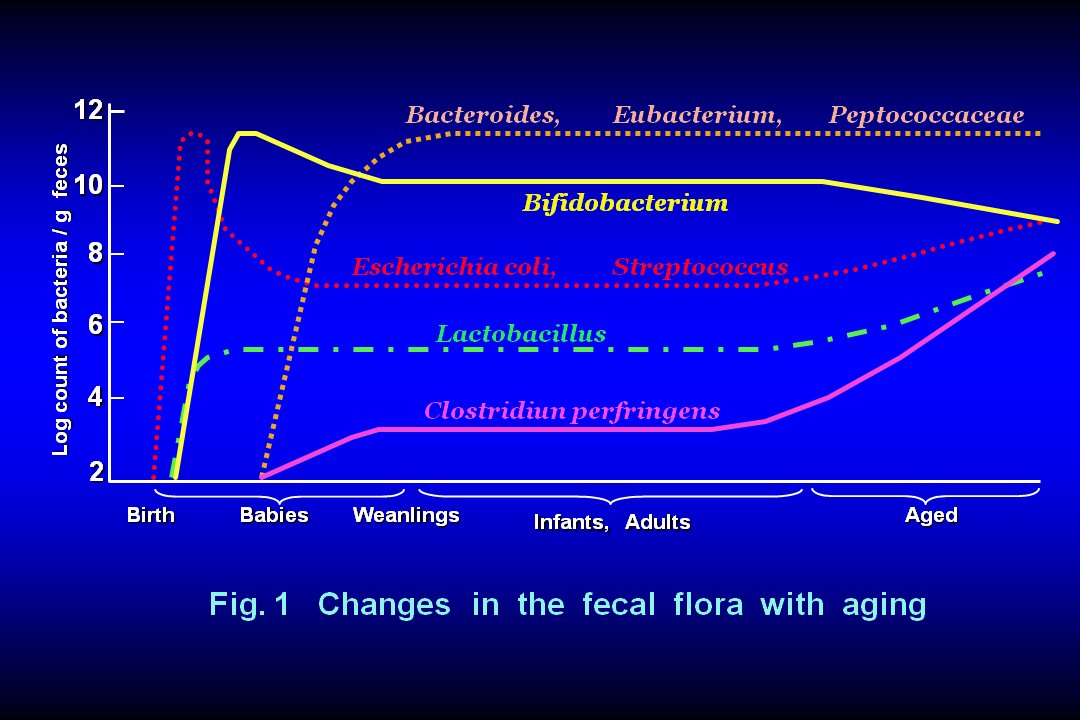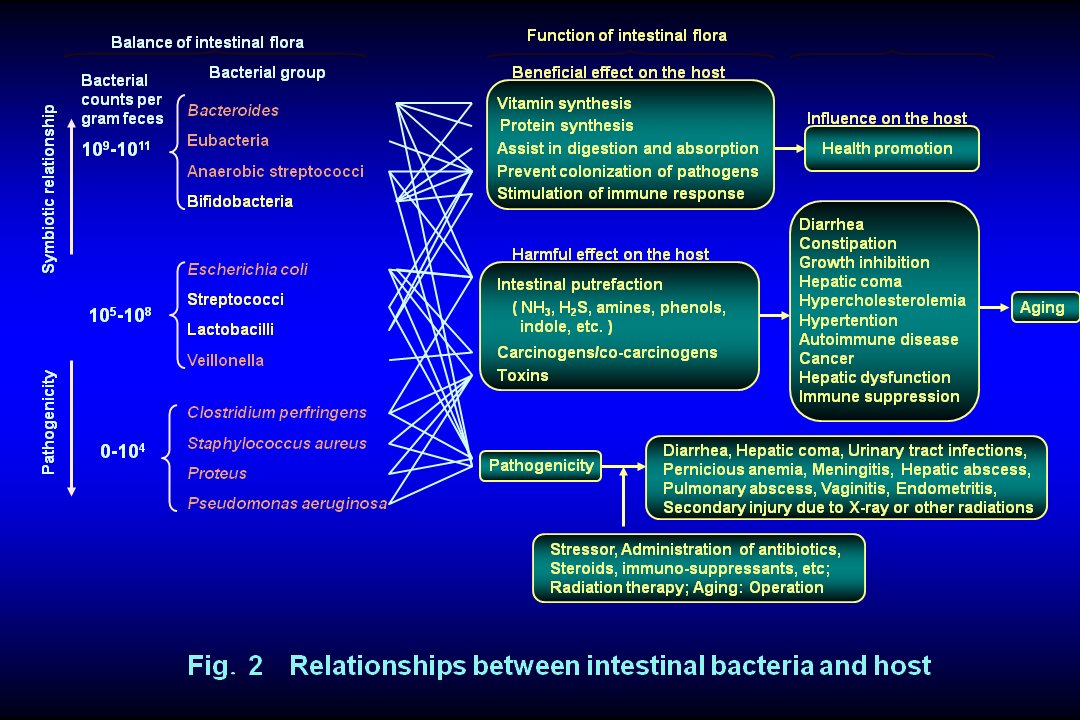Many Beneficial Bacteria and Harmful Bacteria in Our Intestines
A hundred trillions viable bacteria composing 100 species or more different species live in our intestines. We compare these bacteria to fields of flowers and call them “intestinal flora” because of the scene that each group of bacteria lives at certain places. In these bacteria, from the point of view of the function, we do not only have beneficial bacteria such as bifidobacteria, but we also have harmful bacteria representing putrefactive ones such as Escherichia coli and Clostridium perfringens. Additionally, we have some opportunistic bacteria which are normally harmless, but turn virulent, when individuals become less resistant for some reasons. These bacteria constantly maintain a balance.
The Balance of Intestinal Flora Getting Worse with Age
The first stool excreted from the baby after the birth is normally sterile. However, after 5 to 7 days bifidobacteria rapidly become colonized in the intestine, accounting for about 95 to 100% of cultivable flora. Therefore, the intestines of babies are very clean.
At weaning, when mixed diet consumed, the intestinal flora changes to that of adult. Anaerobic bacteria such as Bacteroides, Eubacterium, and anaerobic cocci outnumber bifidobacteria which constitute 10 to 20% of total flora. On the other hand, Escherichia coli and enterococci are account for less than 1% of total bacteria. As just described, intestinal environment after the period of infants is far worse comparing to baby’s one.
 |
|---|
| Fig.1 |
|---|
By the beginning of stage of old age, bifidobacteria are more decrease or diminish. In contrast, the detection rate and the number of harmful bacteria are remarkably increase. This phenomenon is thought to be a result of aging, but it might accelerate aging (Fig. 1).
Relationships between Intestinal Bacteria and Health
 |
|---|
| Fig.2 |
|---|
The intestinal bacteria implicate in conversion food components ingested daily and substances secreted or excreted into the intestine, and affect the host’s health and diseases. These include nutrition, aging, carcinogenesis, and immunological responses (Fig. 2).
When constipation occurs, the harmful bacteria increase in the intestine and form substances that are noxious to the host. Among these are certain putrefactive substances, bacterial toxins, carcinogens, secondary bile acids, etc. These substances may injury the intestine directly and also partially absorbed and damage organs such as liver, pancreas, heart, kidney, brain, and genitals, contributing throughout the host's life to aging and cause life-style related diseases such as arteriosclerosis, hypertension, liver diseases, autoimmune diseases and immuno-suppression. Especially, there is no carcinogens in protein material and fat themselves, which are mostly involved in the western-style food. However, once a part of these substances reaches into large intestine without digestion, they are converted into carcinogens and aging-related substances in the intestine. Both eating western-style food and keeping constipation let harmful bacteria increased, resulting in carcinogenesis, aging, and skin disorder.
Opportunistic bacteria are normally harmless or weakly pathogenic. They change to harmful bacteria, when individuals become less resistant by use of antibiotics, immuno-suppressants, anticancer agents, steroid hormones, etc. and may penetrate from the intestine into the blood stream and organs to cause septicemia and abscess in organs. In the worst case, they are fatal and called “opportunistic infections”.
|